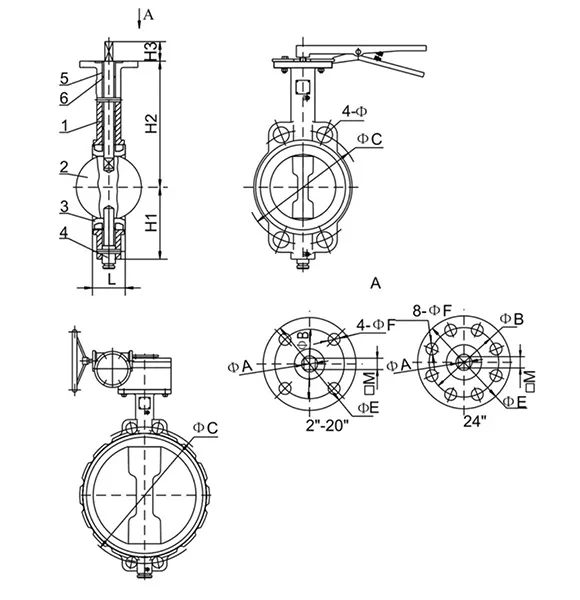Nov . 01, 2024 20:22 Back to list
Understanding the Functionality and Applications of Three-Way Air Valves in Pneumatic Systems
Understanding the Three-Way Air Valve A Key Component in Pneumatic Systems
In the world of pneumatic systems, efficiency and control are paramount. One of the most crucial components that contribute to the seamless operation of these systems is the three-way air valve. This valve plays a significant role in directing airflow and maintaining optimal pressure levels, thereby ensuring that machines and processes operate smoothly.
What is a Three-Way Air Valve?
A three-way air valve is a type of valve that has three ports an inlet, an outlet, and an exhaust. It is commonly used in pneumatic circuits to control the flow of air to various actuators such as cylinders, motors, and other components. Depending on its configuration, a three-way air valve can either allow air to flow in one direction, block air flow, or divert it to another path.
Types of Three-Way Air Valves
There are several types of three-way air valves, categorized mainly by their actuation methods. The most common types include
1. Manual Valves Operated by hand, these valves provide a simple and cost-effective means of controlling air flow. Manual three-way valves are typically used in smaller systems or where precise control is not critical.
2. Solenoid Valves These valves utilize an electromagnetic coil to open or close the valve, enabling remote control of air flow. Solenoid-operated three-way valves are widely used in automated systems due to their reliability and ease of integration with electronic controls.
3. Pneumatic Actuated Valves These valves use air pressure to control the operation of the valve itself. They are ideal for applications requiring rapid cycling and precise control.
Applications of Three-Way Air Valves
three way air valve

The applications of three-way air valves are diverse and can be found in various industries including manufacturing, automotive, and packaging. For instance, in automation, a three-way valve can be used to control the extension and retraction of a pneumatic cylinder, allowing for precise movements in assembly lines.
Another application is in air compressors, where the valve can switch between directing compressed air to different outputs or exhausting excess air to maintain pressure balance. In painting processes, three-way valves can help control the switching of spray guns, improving efficiency in production.
Benefits of Using Three-Way Air Valves
Utilizing three-way air valves in pneumatic systems offers numerous benefits
- Efficiency By controlling the direction of air flow, these valves enhance the efficiency of pneumatic machinery, minimizing energy consumption.
- Control They provide precise control over the operation of actuators, which is critical in maintaining the quality of manufacturing processes.
- Versatility Three-way valves can be adapted to a variety of applications, making them suitable for different operational needs.
Conclusion
In summary, the three-way air valve is an essential component of pneumatic systems, enabling effective control of airflow to various devices. Its versatility and efficiency make it an indispensable tool in modern automation and manufacturing processes. As industries continue to evolve towards more automated and efficient systems, the importance of components like the three-way air valve will only increase, highlighting the need for reliable and innovative solutions in the realm of fluid control.
Share
-
Reliable Wafer Type Butterfly Valves for Every IndustryNewsJul.25,2025
-
Reliable Flow Control Begins with the Right Ball Check ValveNewsJul.25,2025
-
Precision Flow Control Starts with Quality ValvesNewsJul.25,2025
-
Industrial Flow Control ReliabilityNewsJul.25,2025
-
Engineered for Efficiency Gate Valves That Power Industrial PerformanceNewsJul.25,2025
-
Empowering Infrastructure Through Quality ManufacturingNewsJul.25,2025